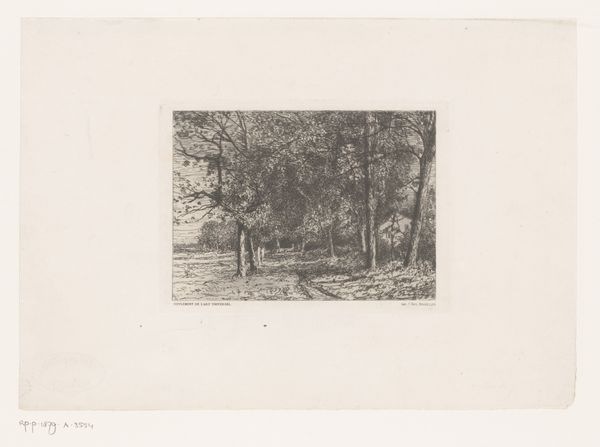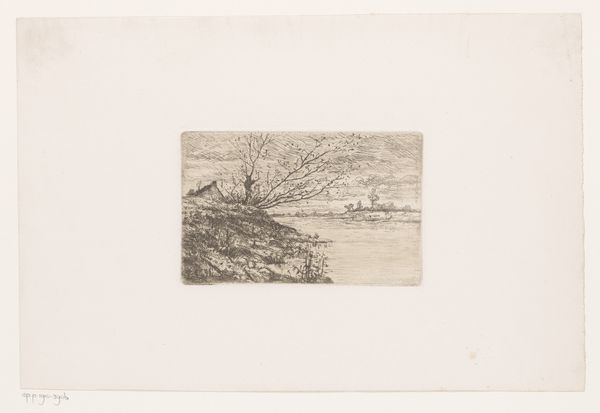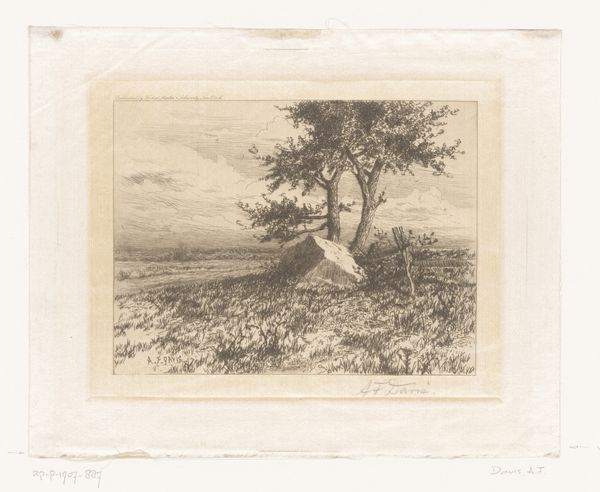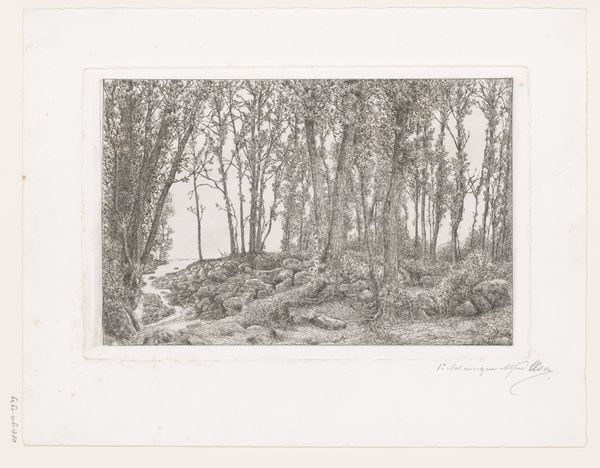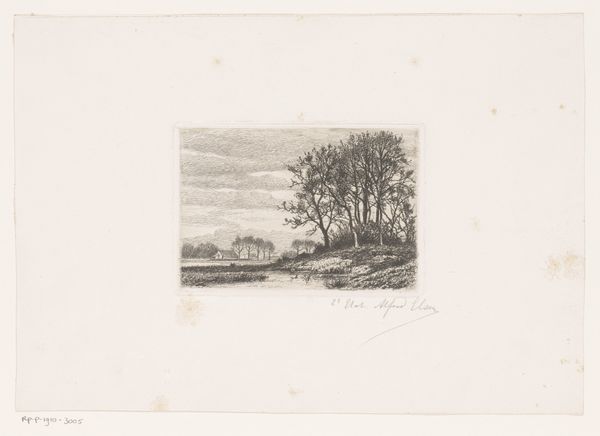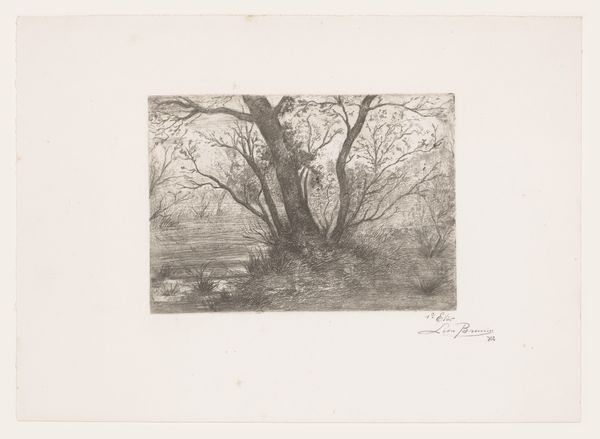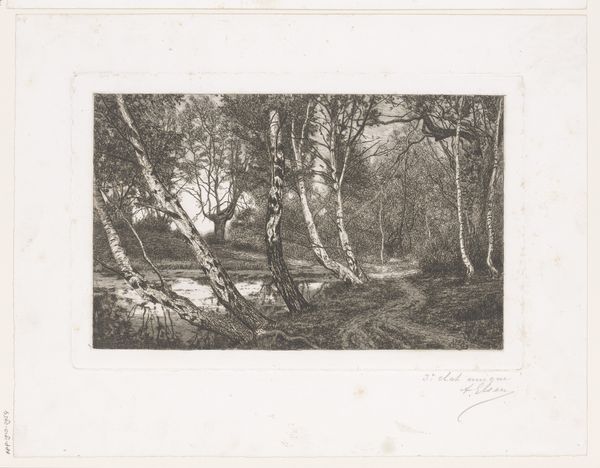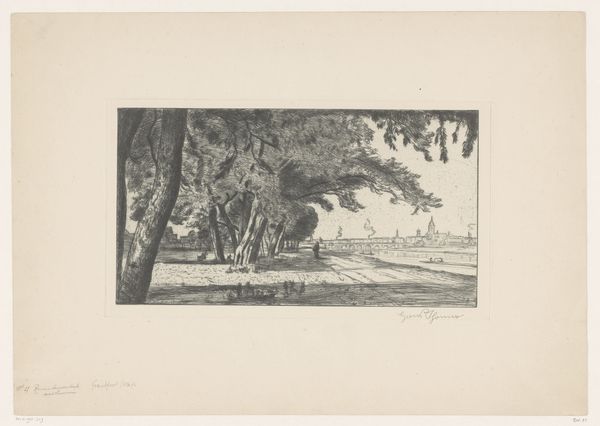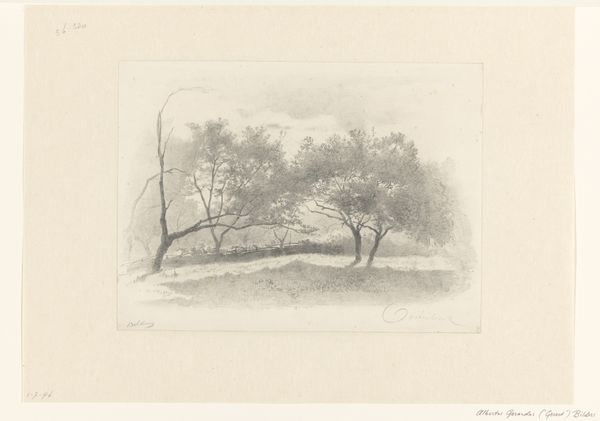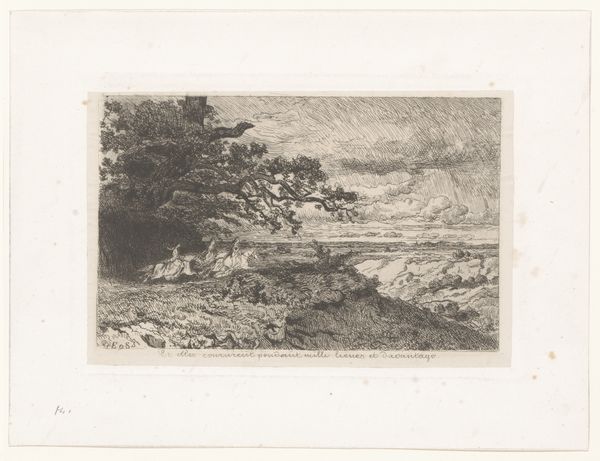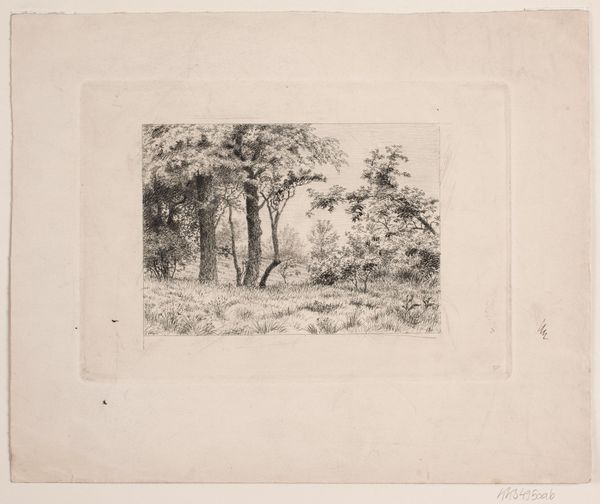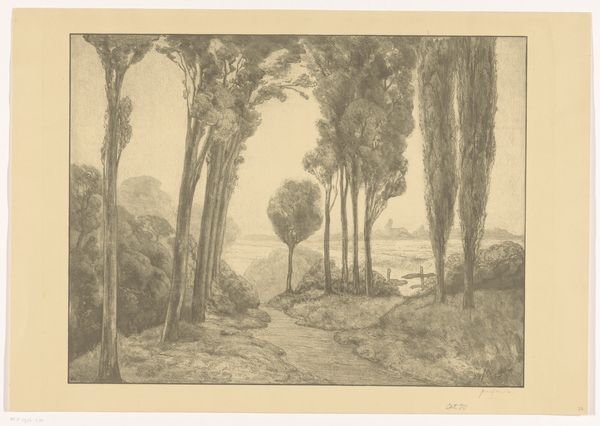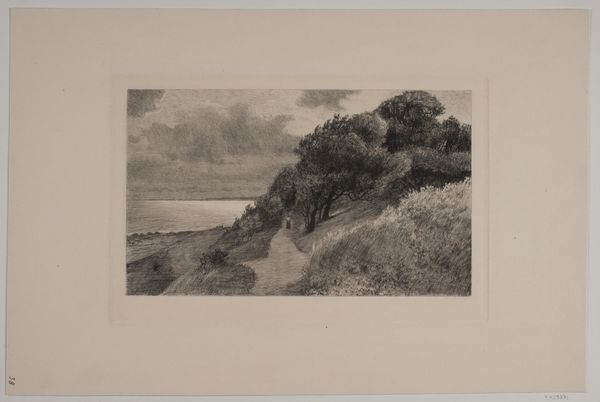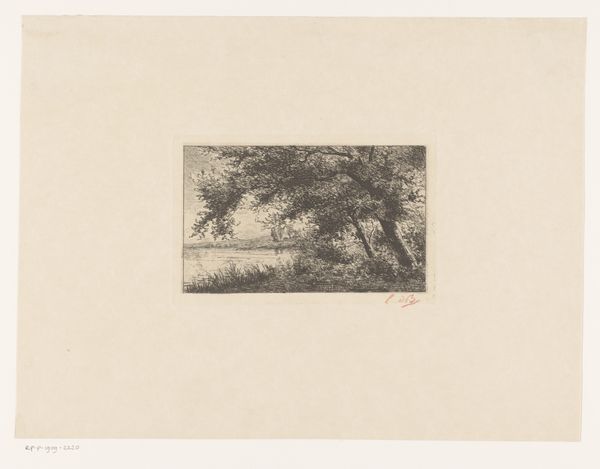
print, etching
# print
#
etching
#
landscape
#
realism
#
monochrome
Dimensions: height 185 mm, width 280 mm
Copyright: Rijks Museum: Open Domain
Curator: So here we have “Landscape with Birches Along a Bank,” an etching that likely dates sometime between 1860 and 1910. It's currently held in the Rijksmuseum. Editor: Oh, this has a distinctly melancholy feel. It's like a charcoal drawing, but with a sharper, almost brittle quality. I can almost feel the crisp autumn air. Curator: As a print, it inherently speaks to accessibility and reproducibility. These weren't unique artworks destined for a collector’s private salon. Think about the availability of art during this period, and the choice of etching, rather than, say, painting, has socio-economic implications. Editor: I find that interesting, particularly as the details of the labor, the sheer hand-work embedded in the etching process, makes one question whether the "availability" of art justifies that hand work. But look at how the artist directs your eye, though—that winding path, almost disappearing under the boughs of these gorgeous birch trees. It's both inviting and isolating, wouldn't you agree? Curator: Absolutely. The winding path is a really standard, dare I say ubiquitous, Romantic trope. Think about the German Romantics, but here we see a rather understated treatment, don't we? And birches are so fascinating for this sort of piece, they invite us to contemplate ideas of fragility. Editor: It’s also about control and design, isn't it? How this scene, seemingly wild and untouched, is actually the result of painstaking labour with acid and metal, with a clear design agenda on the part of the artist. And yet it does offer the allure of the idyllic. It is such a clever feat. I'd love to know where along that path, in this very specific monochrome landscape, the artist has asked me to locate my own body and imagination! Curator: Well, considering how popular these printed landscapes were at that time, maybe the invitation extends to multiple viewers—not a solitary wanderer. Editor: That may be so. It would be rather crowded otherwise. I find it's helped me reconsider the tensions in that era between handmade artworks and mechanization, mass-production. Curator: And for me, it emphasizes how artists in this era harnessed the inherent tensions between intimacy, labor, mass circulation, and the singular landscape.
Comments
No comments
Be the first to comment and join the conversation on the ultimate creative platform.
